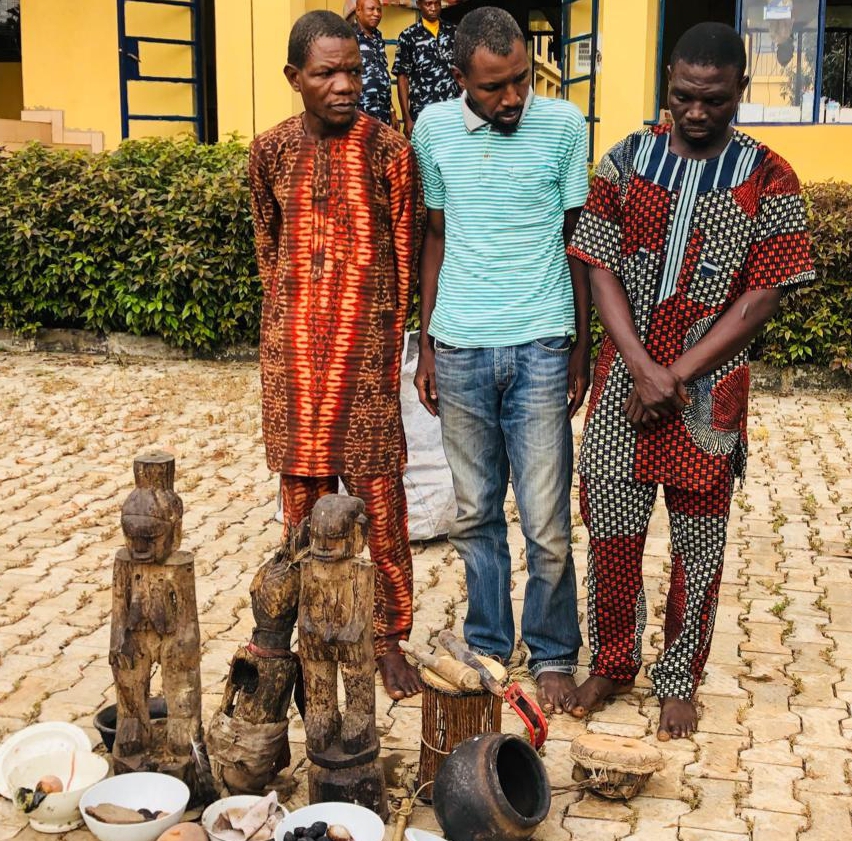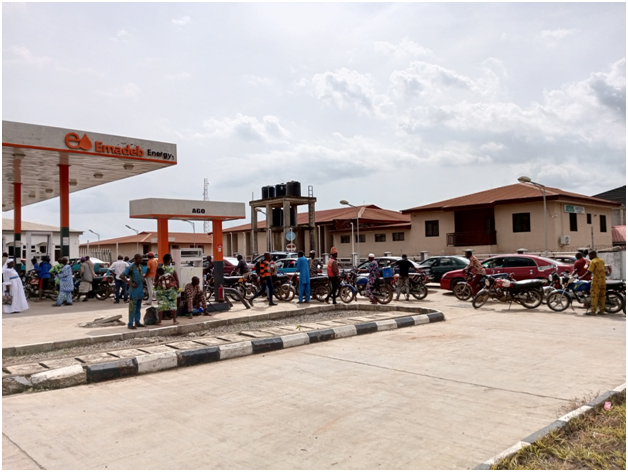Plights of Oke Iya and Oke Obeere commuters
Plights of Oke Iya and Oke Obeere commuters
By Seye Fakinlede
|
It is no exaggeration when they say Ijoka in Akure is a big fast growing community. Even though there might be a little debate to where Ijoka actually begin, some residents in Ijoka are actually traveling within Ijoka to a place called home.
The Oke Iya and Oke Obeere residents’ journey officially begin from the popular Olopejojo Bus-Stop then plying a long untarred road up to another Y-shaped diverge roads to the two Okes namely; Oke Iya, the left-hand side road and Oke Obeere, the right-hand side road.
Oke Iya and Oke Obeere still have some other interior communities like Igi Sogba, New Jerusalem, Elemo amongst others, yet commercial vehicles do not go this far because of the condition of the road and its distance.
Taxis from Oja-Oba, Nepa , Sijuade or wherever they are boarded alight their passengers at the foot of the Olopejojo Bus-Stop, where many of the residents of these interior routes continue their journey either by soliciting for a lift, bike, wait for the bus or trek to their various distant homes in dust, and dirt, soak and soiled road, depending on the climate of the day. Besides, there is no surety that they can always get a taxi going to Olopejojo Bus Stop, because many drivers find the route strenuous on some certain hours- evening or night, and events-rain or a suspected gridlock. .
It’s quite unimaginable what most residents go through at night to get to their homes.
Residents of these areas are mainly government workers, traders, students, who daily go to the “town” for their various activities and are constantly worried on how to return to their residential homes early enough.
The night crawlers of this route rely heavily on their chargeable lamps, phones and light radiance from the houses on the street to navigate their route to their homes in order to compensate for the absent street lights, little wonder most of these night crawlers have learnt to use the buses which is for now, the best transporting means for the residents.
Buses make the journey easier at least for the residents of Oke Iya where they alight at Top Toa, a petrol station at the right hand side of the road , then they continue their journey home through bike, a free ride, while residents of Oke Obeere get to the Tee , the last bus top for the Oke Obeere, where many of the commuters find their routes to Elemo, New Jerusalem and some to another interior part called Aba.
And for most of them, this is a daily routine.
The Ijoka buses have their park a few meters from the Elemo Palace at Oja Oba at a fee of N100 which many of the commuters find reasonable.
Also, these buses conveniently convey their loads- for the market women, without any iota of worry to be surcharged, a venture they dare not imagine with the taxis.
Even though the condition of some of these buses are pitiable, it is the surest solace to aid their journey home.
For example, the heat from the buses and getting a bit wet whenever it rains is best experienced than imagined.
The passengers are partially shielded from the rain because most of the buses give way to rain drops due to rust, and the uneven windows. Besides, they also suffer from the buses heat emanating from the engine.
On the front seat was a family of three, whose wife carrying a baby persistently complained about her discomfort. She tried severally to adjust her legs for comfort even as she jerked her baby to her chest. Beside her was her husband who was also having a futile time in opening the window for some fresh air. Frustrated with the whole thing, she swore never to board a bus again.
I too was a victim of the heat and then a few drops from the rain. In fact, passengers close to the window sides are the most affected, even the driver who looked unperturbed as he chauffeured the bus while it rained.
The 18-seater bus may not be all convenient, but it is definitely what most of these residents have relied on, especially those whose work, school or trade revolve around the Oja Oba, Arakale axis.
Passengers at the park can wait for about 10-15 minutes more or less till the bus is filled, depending on the hour of the day, before the bus commence its journey.
Then from Elemo’s Palace, towards Arakale, where it navigates inside Odopetu, then to Gboliki and the last turn at Hospital Road before heading for the straight road which leads to Ijoka. This movement is for a short cut.
This whole journey to Ijoka is approximately within 30-35 minutes to the last bus stop without gridlocks.
A trader directly behind the driver seat , who revealed that she stays after Elemo, when quizzed, complained how getting home is always stressful. She says she resolved to take the bus for it saves her a lot. And before her were her load. She continued further to reveal that okada men from Olopejojo only take them further to “Tee” at the rate of N80 and sometimes N100 and that’s she would had been lucky enough to get a taxi from Oja during the afternoon or evening time.
Tosin, a university student also tells of the ordeals that befall residents of Oke Obeere at night. She recounts the difficulty of getting a taxi from anywhere she is, especially Oja, where her mother, a dark skinned slim woman sells soup ingredients, when it is past 5pm. She says, “ most taxis by that time only stop at Sunday Bus Stop, sometimes Davog junction and luckily few at times stop at Olopejojo ,still, I have to take a bike to Tee, and it’s always to constantly bargain the price.” She affirms that the bus makes plying the route home easier a bit to the point where everyone finds their various destinations home.
For most of the commuters of Oke Obeere on the bus, “Tee”is a safe haven to find their way home.
Sitting in the bus is not without the various tales from the passengers. Another woman, on the fourth seat , recalled an event that happened at dawn to some passengers, at least to those who cared to listen. She says,” You need to see what happened here this morning, as complement on how bad the road can be whenever it rains. A big jeep was stuck here. Even the bike people couldn’t pass. You see all those pavements, pointing at the houses, that was where people were passing. The drama was too big, she concluded.
This place is always worst during the rainy season, another woman beside her said as an affirmation to her tale.
For the Oke Iya and Oke Obeere night and evening crawlers, a graded road will lure more commercial vehicles, yet, it is a virgin area to explore for the Keke Napep riders from any of the key bus stops to the various interior locations which would definitely ease the journey of these night crawlers alongside with the buses.
The driver on this very bus is a friendly fifty-something-years old, he too retiring from the day’s work. He says “before, the buses do get to Elemo but now, we stop here because of the road construction from Idanre. The bus fare is N100 from Oja, although N50 and N80 along the way depending on proximity of the passengers. Although currently, no bus gets to Oke Iya but we stop at the filling station, Top Toa and some of the passengers you saw were still going to another interior part of Oke Iya.”










